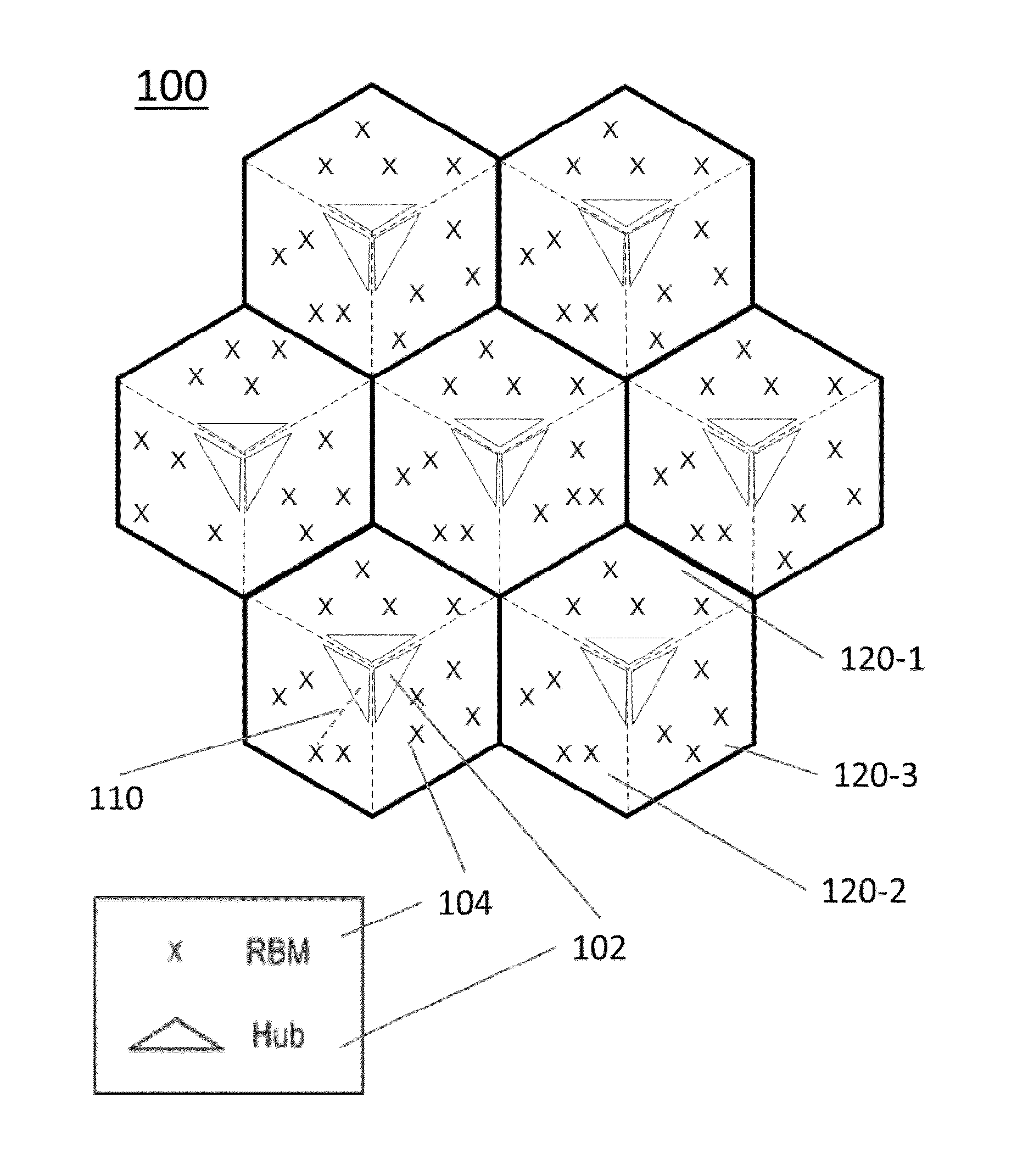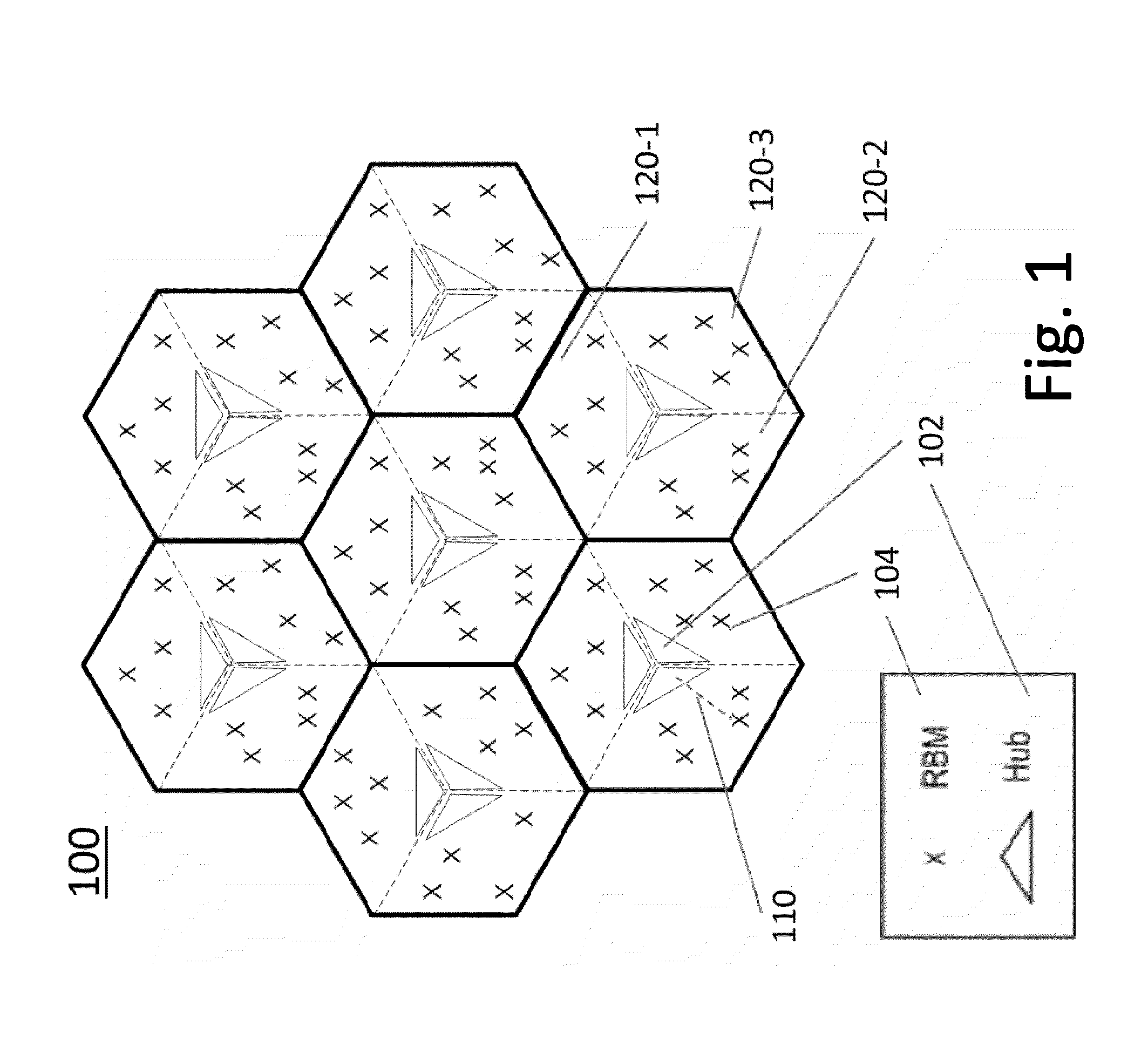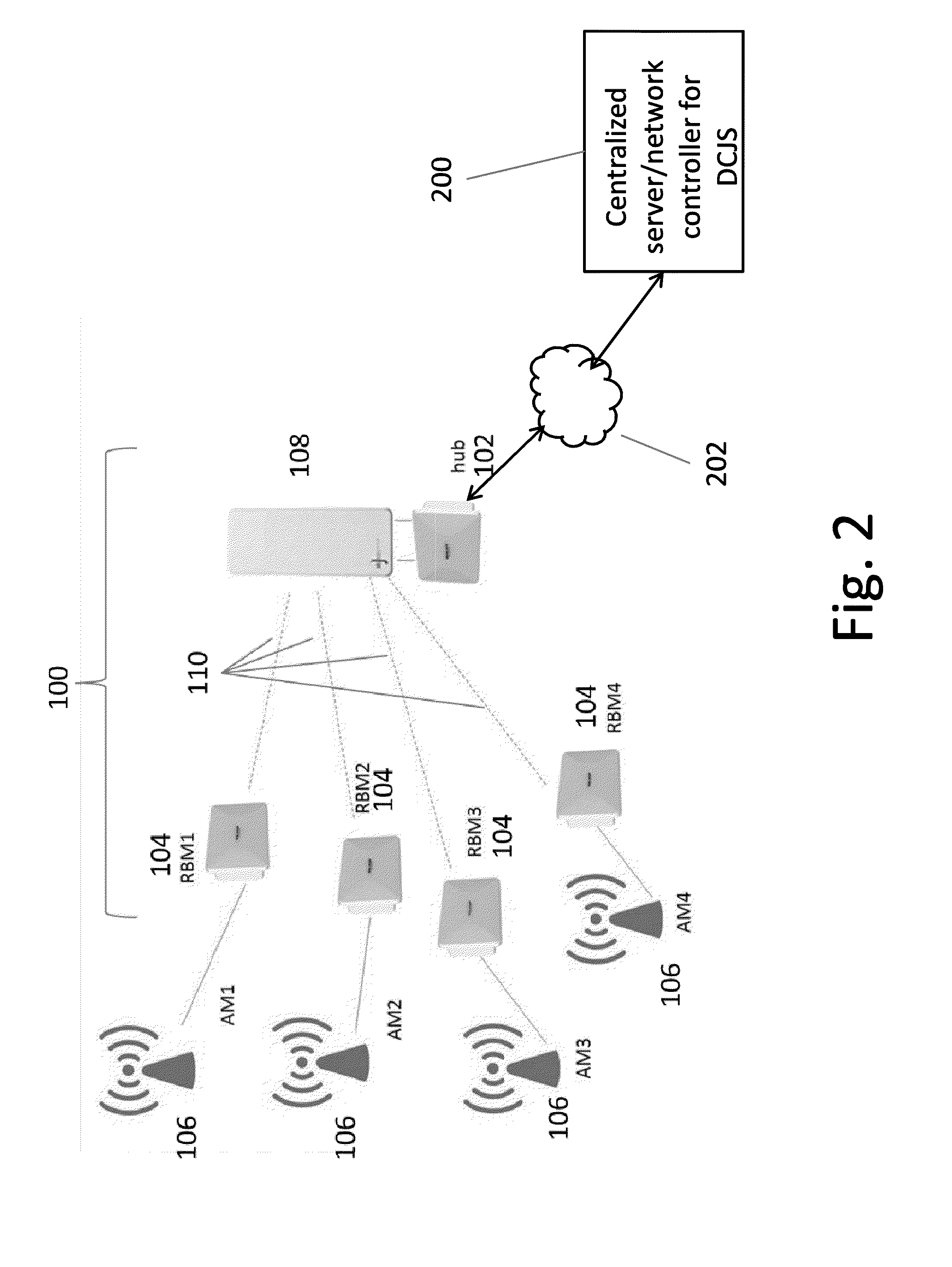System and method for reception mode switching in dual-carrier wireless backhaul networks
a dual-carrier fixed wireless and backhaul network technology, applied in data switching networks, frequency-division multiplexes, instruments, etc., can solve the problems of interference cancellation or rejection, high cost of spectrum, and the performance of the system is far from an interference-free performance upper bound in capacity and reliability, etc., to achieve the elimination or mitigation of the disadvantages of the known system and method
- Summary
- Abstract
- Description
- Claims
- Application Information
AI Technical Summary
Benefits of technology
Problems solved by technology
Method used
Image
Examples
Embodiment Construction
[0059]A system and method for reception mode selection in a dual carrier wireless backhaul network will be described, by way of example, with reference to a NLOS wireless backhaul network 100 as illustrated schematically in FIG. 1, which represents schematically the topology of a system comprising a point-to-multipoint wireless backhaul network, comprising a plurality of fixed nodes. The nodes comprise a plurality of Hubs 102 and RBMs 104.
[0060]As an example only, the wireless backhaul network 100 shown in FIG. 1 comprises a plurality of seven sites or cells, each site comprising three Hub modules 102, with each Hub module serving a sector 120 comprising a cluster of a plurality of Remote Backhaul Modules (RBMs) 104. Thus, there are 21 sectors, each with a Hub module 102 serving a cluster of up to four RBMs. As shown, three Hubs modules 102, each with directional antenna, are co-located in each of the cell centers, with a cluster of RBMs mapped to each respective serving Hub, in eac...
PUM
 Login to View More
Login to View More Abstract
Description
Claims
Application Information
 Login to View More
Login to View More - R&D
- Intellectual Property
- Life Sciences
- Materials
- Tech Scout
- Unparalleled Data Quality
- Higher Quality Content
- 60% Fewer Hallucinations
Browse by: Latest US Patents, China's latest patents, Technical Efficacy Thesaurus, Application Domain, Technology Topic, Popular Technical Reports.
© 2025 PatSnap. All rights reserved.Legal|Privacy policy|Modern Slavery Act Transparency Statement|Sitemap|About US| Contact US: help@patsnap.com



